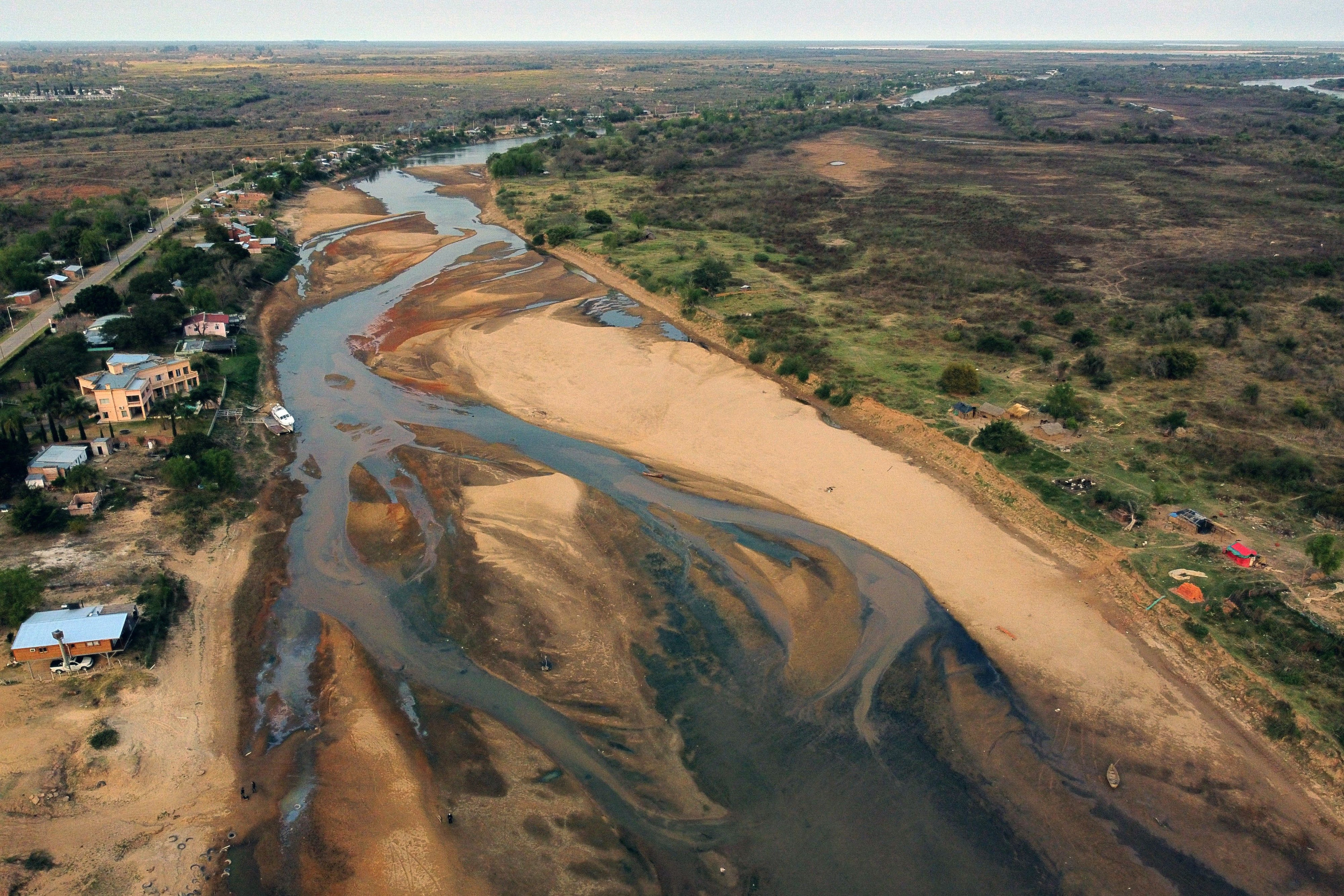Before-and-after photos published over the weekend reveal the severity of a drought plaguing the Amazon that has depleted several lakes and rivers.
Several bodies of water in the Amazon are suffering from low water levels as El Niño grips the region. The climate phenomenon is known for causing warm water in the tropical Pacific Ocean west of South America, but the impacts have been exacerbated by climate change—resulting in low water levels that have devastating impacts. The drought has stranded some of the Amazon’s river communities, leaving people without access to desperately needed supplies. The drought also has proven fatal, with several marine species dying from its impacts.
On Saturday, a researcher shared four satellite photos that showed the steep decline in water levels at Lake Tefé. The pictures were taken on September 5, September 13, September 22 and October 18.
“40 days of the extreme drought in Lake Tefé, Central Amazon,” Ayan Fleischmann posted on X, formerly Twitter. Fleischmann is a researcher at the Mamirauá Institute for Sustainable Development.
Newsweek reached out to Fleischmann by email for comment.
In the first photo, Lake Tefé can be seen full of blue water. The water level has fallen substantially over a 40-day period, and the last photo shows a nearly dry lakebed.
The low water levels are causing fatal impacts, as 153 river dolphins—or 10 percent of the lake’s population—died over a week after Lake Tefé’s water temperatures soared to 102.38 Fahrenheit during the last week of September. The dolphins were found dead by the dozens, with 130 pink dolphins and 23 tucuxi dolphins affected. Usually, the lake’s water temperature is around 89.6 degrees F, but the intense drought has spiked temperatures.
Hundreds of fish were also killed in the Rio Negro due to low water levels and high temperatures. The fish were contaminating the water source and also signaled that more ominous impacts would take place if the drought continued. Wildfires have gripped the region as well, worsening the air quality.
Brazil has dedicated a task force to some of the most affected communities, in which the task force will bring fresh water, food, medicine and other supplies to the region. The task force will also dredge the river to encourage water flow to allow for the transportation of supplies as the levels continue to fall.
El Niño is known to bring higher-than-average precipitation to the southern portion of the United States, but it has the opposite effect for Brazil.
“For northern Brazil where the river is, El Niño tends to lead to drier, warmer than normal conditions going through their spring and into their summer,” AccuWeather senior meteorologist Jason Nicholls previously told Newsweek.
Nicholls added that relief is not likely for the region until March or April, when cooler weather arrives in the area and when El Niño starts to weaken.

